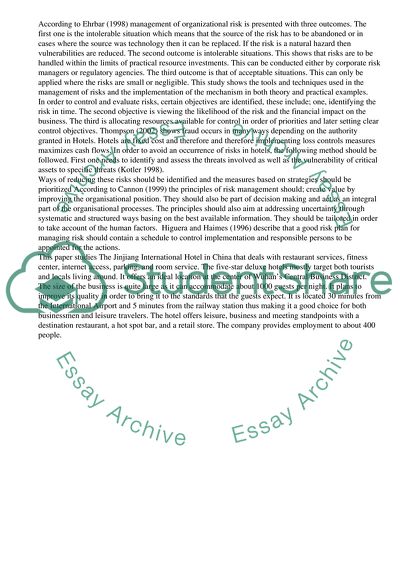Cite this document
(“Risk Management in the Jinjiang International Hotel in China Case Study”, n.d.)
Risk Management in the Jinjiang International Hotel in China Case Study. Retrieved from https://studentshare.org/management/1738164-risk-management-policies-for-protecting-guests-against-theft-and-fraud-in-hotel
Risk Management in the Jinjiang International Hotel in China Case Study. Retrieved from https://studentshare.org/management/1738164-risk-management-policies-for-protecting-guests-against-theft-and-fraud-in-hotel
(Risk Management in the Jinjiang International Hotel in China Case Study)
Risk Management in the Jinjiang International Hotel in China Case Study. https://studentshare.org/management/1738164-risk-management-policies-for-protecting-guests-against-theft-and-fraud-in-hotel.
Risk Management in the Jinjiang International Hotel in China Case Study. https://studentshare.org/management/1738164-risk-management-policies-for-protecting-guests-against-theft-and-fraud-in-hotel.
“Risk Management in the Jinjiang International Hotel in China Case Study”, n.d. https://studentshare.org/management/1738164-risk-management-policies-for-protecting-guests-against-theft-and-fraud-in-hotel.


